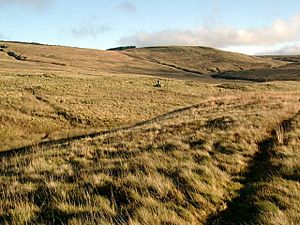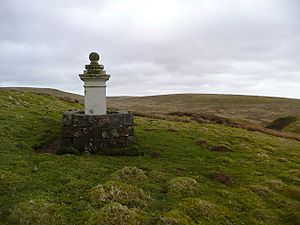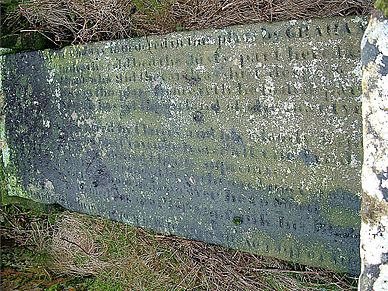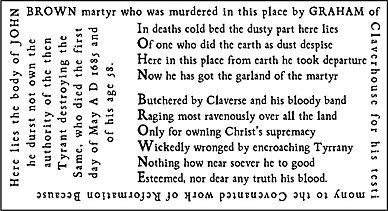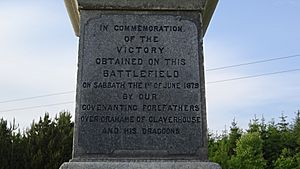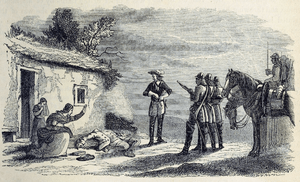John Brown of Priesthill facts for kids
John Brown (1627–1685), also known as the Christian Carrier, was a Protestant Covenanter from a farm called Priesthill in Ayrshire, Scotland. He became a Presbyterian martyr in 1685.
During a difficult time in the 1680s, many people were executed by the government. John Brown's death was especially controversial. It showed how harsh the government could be, especially through the actions of John Graham of Claverhouse.
Contents
Why John Brown Was Important
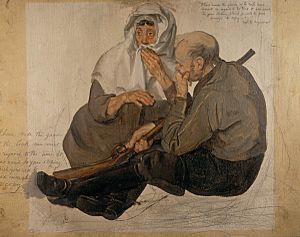
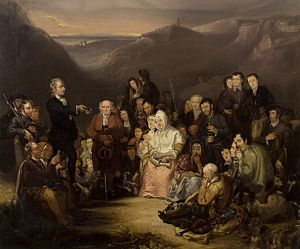
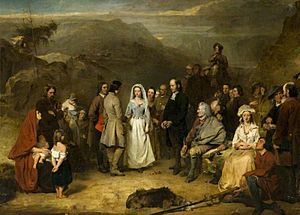
To understand John Brown's story, it helps to know about the Covenanters. These were Scottish Protestants who wanted to protect their church's beliefs and way of worship. They believed the king should also follow their religious rules.
In 1650, the Scottish government made an agreement with King Charles II. They would crown him king if he promised to support their church. But when Charles II became king in 1660, he broke his promises. He brought back bishops to the Church of Scotland, which the Covenanters did not like. He also passed new laws that made it very hard for Presbyterians to hold public jobs or even worship freely.
This made many Covenanters upset. It led to protests and even violence. In 1679, there were battles like Drumclog and Bothwell Bridge. In 1680, a group of Covenanters declared they could not accept a king who didn't respect their religion. When King Charles II died in 1685, his Catholic brother, James VII, became king. This made the situation even more tense for Protestants in Scotland.
John Brown's Life
John Brown lived on a quiet farm called Priesthill in Ayrshire. He worked as a farmer and also transported goods as a carrier. People described him as a very religious person. He was good at sharing his knowledge with others, especially young people.
John Brown was involved with the Covenanters. He fought with them at the Battle of Bothwell Bridge in 1679. He was also friends with important Covenanter leaders. In 1682, Alexander Peden, a famous Covenanter preacher, married John Brown to his second wife, Marion Weir. At their wedding, Peden reportedly predicted that John Brown would have a short and violent end. He even told Marion to keep linen ready for his burial.
His Capture and Death
In May 1685, John Brown was captured by a group of soldiers led by John Graham of Claverhouse. This happened during a time when the government was trying to stop any rebellions in the country.
When soldiers searched Brown's house, they found bullets, gunpowder, and papers that the government considered "treasonable." John Brown was then asked to take the Oath of Abjuration. This was an oath that Covenanters could not take because it went against their beliefs. Refusing to take this oath was a serious crime, considered high treason against the king. John Brown knew this, but he still refused.
Another person, "John Brownen" (likely John Brown's nephew), told the soldiers that John Brown had fought in the battles of Drumclog and Bothwell Bridge. Soldiers also found a hidden underground room with weapons, which John Brown said belonged to his uncle.
The Shooting
After John Brown refused the oath and was linked to the battles, he was shot. This was a quick execution without a trial. Different stories were told about his death by Covenanter writers. Some said six soldiers shot him. Others claimed the soldiers were so moved by Brown's prayers that they refused to shoot. In these stories, Claverhouse himself had to shoot Brown.
Some accounts say his wife was present, and even his young son. While details might vary, these stories show how deeply these events affected people in Scotland. For many years, the Scottish people had a strong connection to their church. Now, the king's laws were threatening their way of life and their faith.
Lasting Impact
The story of John Brown and many others like him is still important today. These events were part of a bigger struggle that led to the Revolution in Scotland and England. They show how ordinary people started to speak up against government policies.
This period helped develop modern ideas about democracy. It showed that there are limits to what a government can do, especially when people strongly oppose its actions. These ideas eventually replaced the old belief that kings had a "divine right" to rule without question.



